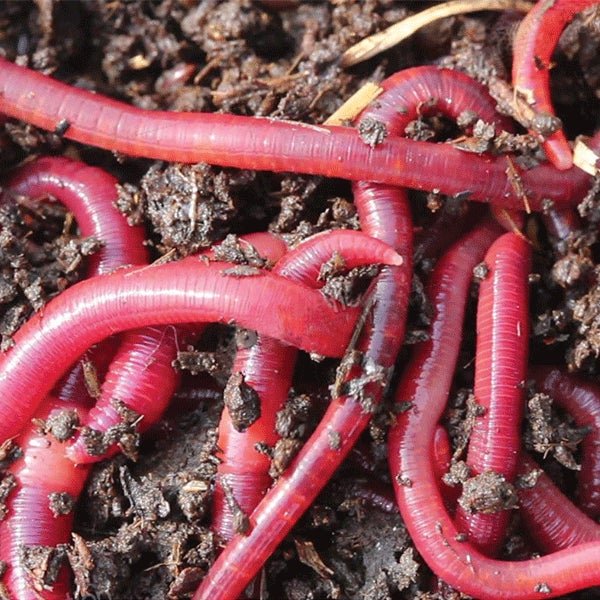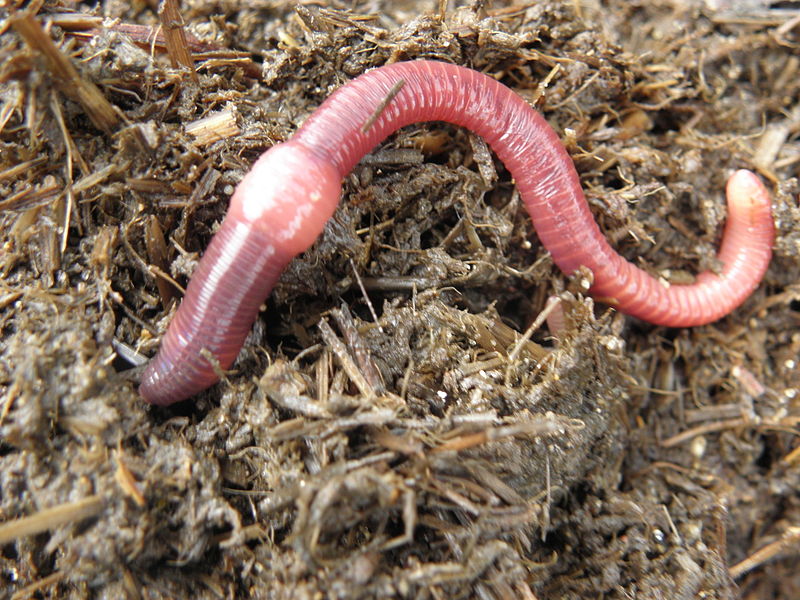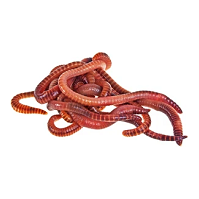Organic red worms: Perfect for compost bins
Wiki Article
Leading Benefits of Making Use Of Red Wigglers for Vermiculture
The use of red wigglers, or Eisenia fetida, in vermiculture provides a number of compelling advantages that expand past simple composting. These organisms not only boost dirt fertility and structure but also facilitate an extra reliable decay procedure while proactively taking part in waste decrease. Their visibility substantially increases microbial task within the soil, creating a growing environment conducive to plant development. As we check out these advantages even more, it becomes obvious that the implications of including red wigglers into farming methods are both extensive and significant.
Boosted Soil Fertility
Improved dirt fertility is an essential part of lasting agriculture, and red wigglers play a vital role in this procedure. As a types of earthworm, red wigglers (Eisenia fetida) are particularly efficient in enhancing soil health and wellness with their all-natural habits and organic functions. They take in natural waste, simplifying into nutrient-rich castings that dramatically enhance soil framework and nutrient accessibility.The castings generated by red wigglers are abundant in important nutrients, consisting of nitrogen, phosphorus, and potassium. These nutrients are easily available to plants, advertising durable growth and greater yields. In addition, the existence of red wigglers in the dirt enhances microbial task, additional contributing to nutrition cycling and dirt aeration. This organic activity cultivates a more resistant soil ecological community, which can better hold up against environmental stress and anxieties such as drought or pest invasions.
Incorporating red wigglers into farming practices not only enhances soil fertility however additionally decreases the demand for synthetic fertilizers, straightening with natural farming principles. Utilizing red wigglers in vermiculture stands for a lasting method to soil monitoring, inevitably sustaining the long-term practicality of farming systems.
Quick Decay Refine
The quick decomposition process assisted in by red wigglers is an impressive sensation that significantly benefits both composting and soil health and wellness. These earthworms, recognized medically as Eisenia fetida, play a crucial function in breaking down natural issue successfully. By eating cooking area scraps, plant debris, and other organic waste, red wigglers convert these materials into nutrient-rich castings at an accelerated rate.The process begins as the worms consume raw material, where it is then digested in their specialized gizzards - red wigglers. This malfunction not just lowers the quantity of waste yet additionally boosts the schedule of crucial nutrients. As red wigglers eliminate spreadings, they launch a result that is including useful bacteria, which additionally aids in decay and enriches the compost
(red wigglers)Furthermore, their burrowing tasks freshen the compost, promoting ideal microbial task. This vibrant environment speeds up decay, bring about a quicker turn over of natural product into useful garden compost. As a result, garden enthusiasts and farmers can enjoy quicker access to premium garden compost, therefore enhancing their ability to support plant development and total soil vigor. The performance of red wigglers in the decomposition process is thus important for sustainable composting methods.
Improved Dirt Framework

In addition, the spreadings created by red wigglers are rich in beneficial microbes and nutrients, which advertise a healthy dirt community. These castings enhance the soil's wetness retention capability, minimizing the need for regular watering. As the raw material is broken down right into finer bits, it boosts the dirt's accumulated security, stopping erosion and compaction.
The presence of red wigglers additionally fosters a varied microbial community, which plays a vital function in nutrient cycling. This variety additionally enhances dirt fertility and resilience, enabling it to sustain a vast array of plant life.

Reduction of Waste
Vermiculture utilizing red wigglers plays an essential function in the decrease of waste, particularly organic waste that would otherwise finish up in land fills. The process of vermicomposting efficiently changes numerous kinds of organic materials, such as food scraps, lawn waste, and paper items, right into nutrient-rich vermicast. This not just draws away waste from landfills but likewise lessens the ecological influence connected with waste decomposition in these sites, which frequently produces hazardous greenhouse gases like methane.
By employing red wigglers, people and organizations can handle their natural waste much more sustainably. These worms have an exceptional capacity to eat substantial quantities of natural product, transforming it right into beneficial garden compost that can be used to enhance soil. This process not only decreases the volume of waste but also prolongs the lifespan of landfills, ultimately adding to waste management solutions.
In addition, embracing vermiculture practices motivates a society of reusing and sustainability. As even more people recognize the benefits of composting with red wigglers, the collective influence on waste decrease becomes significantly considerable. In summary, utilizing red wigglers for vermiculture provides a reliable approach for minimizing organic waste while boosting environmental stewardship.
Increased Microbial Task
While engaging in vermicomposting, the existence of red wigglers considerably boosts microbial activity within the composting system. These earthworms develop a helpful atmosphere for advantageous microorganisms by freshening the compost and breaking down natural product. As the worms take in food scraps and various other organic waste, they secrete nutrient-rich spreadings, which function as a habitat and food resource for varied microbial communities.The raised microbial activity facilitates the fast disintegration of natural matter, causing a lot more efficient vitamins and mineral cycling. This procedure not only accelerates garden compost maturation however also boosts the overall top quality of the final item. Bacteria, such as microorganisms and fungi, grow in the worm-rich atmosphere, leading to a greater concentration of crucial nutrients like nitrogen, phosphorus, and potassium in the compost.
In addition, the synergistic partnership between red wigglers and germs contributes to microorganism reductions and improves dirt health. By cultivating a robust microbial population, vermicomposting with red wigglers advertises biodiversity in the compost, eventually causing richer, healthier dirt for plant development. Thus, the function of red wigglers in increasing microbial activity is crucial for successful and sustainable vermiculture methods.
Verdict
In summary, the use of red wigglers in vermiculture offers various benefits, consisting of enhanced soil fertility, reliable decomposition of organic issue, and boosted soil structure. Their special visite site burrowing actions not only promotes much better water retention yet additionally aids in the reduction of waste, adding to lasting waste monitoring practices. Additionally, the boosted microbial task cultivated by their castings supports a flourishing ecological community, inevitably causing healthier plants and more resilient farming systems.Report this wiki page